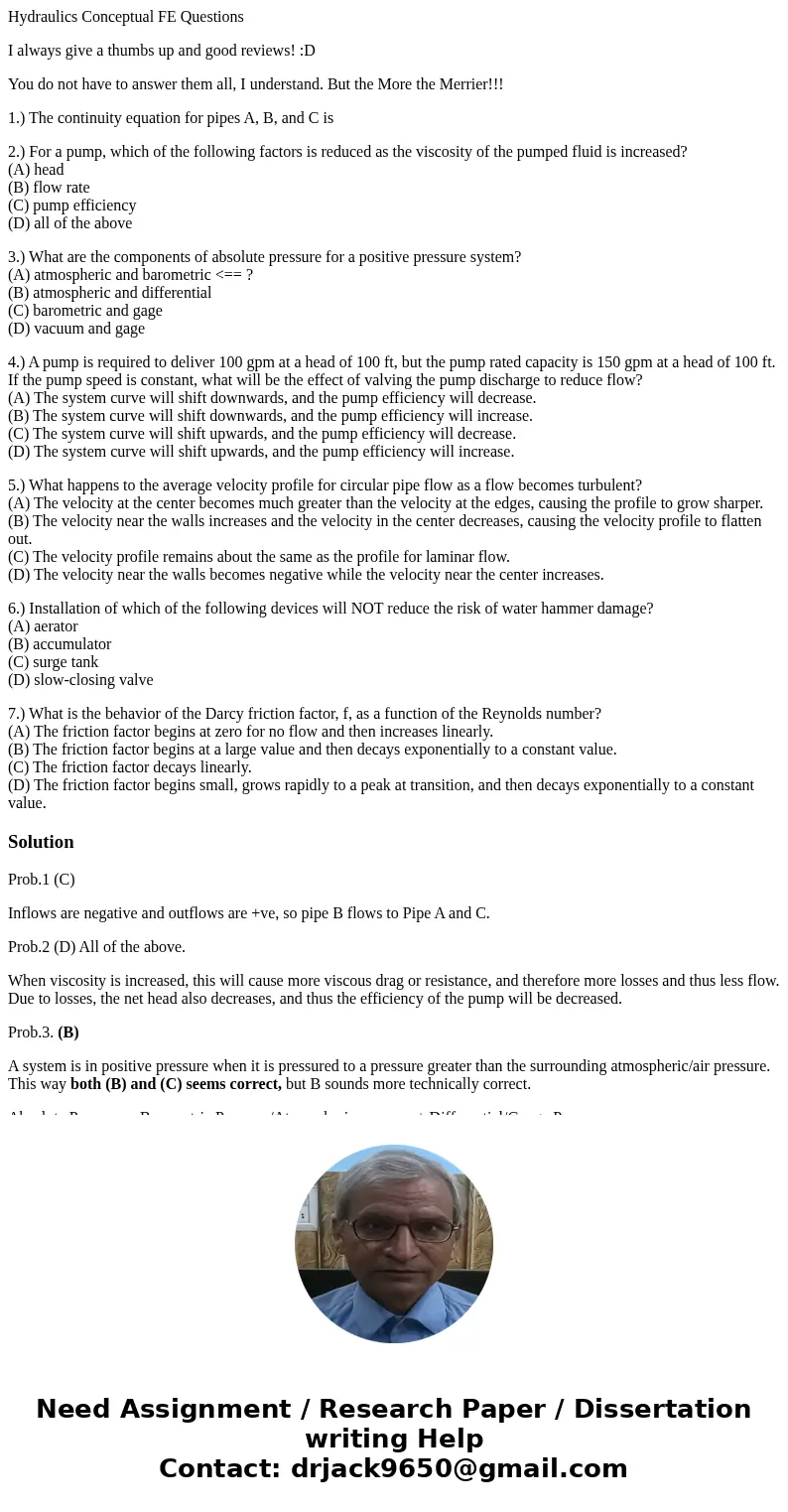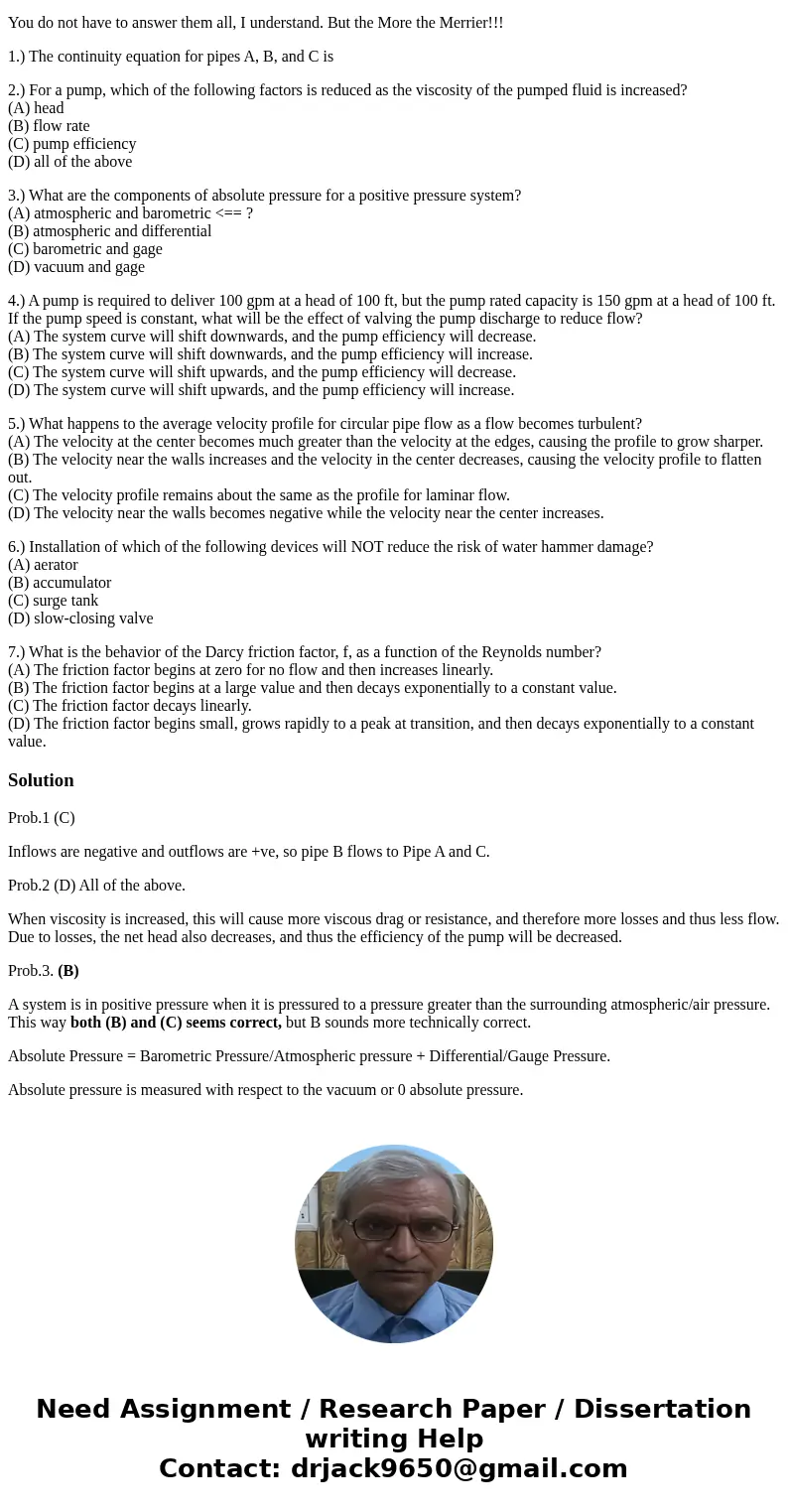Hydraulics Conceptual FE Questions I always give a thumbs up
Hydraulics Conceptual FE Questions
I always give a thumbs up and good reviews! :D
You do not have to answer them all, I understand. But the More the Merrier!!!
1.) The continuity equation for pipes A, B, and C is
2.) For a pump, which of the following factors is reduced as the viscosity of the pumped fluid is increased?
(A) head
(B) flow rate
(C) pump efficiency
(D) all of the above
3.) What are the components of absolute pressure for a positive pressure system?
(A) atmospheric and barometric <== ?
(B) atmospheric and differential
(C) barometric and gage
(D) vacuum and gage
4.) A pump is required to deliver 100 gpm at a head of 100 ft, but the pump rated capacity is 150 gpm at a head of 100 ft. If the pump speed is constant, what will be the effect of valving the pump discharge to reduce flow?
(A) The system curve will shift downwards, and the pump efficiency will decrease.
(B) The system curve will shift downwards, and the pump efficiency will increase.
(C) The system curve will shift upwards, and the pump efficiency will decrease.
(D) The system curve will shift upwards, and the pump efficiency will increase.
5.) What happens to the average velocity profile for circular pipe flow as a flow becomes turbulent?
(A) The velocity at the center becomes much greater than the velocity at the edges, causing the profile to grow sharper.
(B) The velocity near the walls increases and the velocity in the center decreases, causing the velocity profile to flatten out.
(C) The velocity profile remains about the same as the profile for laminar flow.
(D) The velocity near the walls becomes negative while the velocity near the center increases.
6.) Installation of which of the following devices will NOT reduce the risk of water hammer damage?
(A) aerator
(B) accumulator
(C) surge tank
(D) slow-closing valve
7.) What is the behavior of the Darcy friction factor, f, as a function of the Reynolds number?
(A) The friction factor begins at zero for no flow and then increases linearly.
(B) The friction factor begins at a large value and then decays exponentially to a constant value.
(C) The friction factor decays linearly.
(D) The friction factor begins small, grows rapidly to a peak at transition, and then decays exponentially to a constant value.
Solution
Prob.1 (C)
Inflows are negative and outflows are +ve, so pipe B flows to Pipe A and C.
Prob.2 (D) All of the above.
When viscosity is increased, this will cause more viscous drag or resistance, and therefore more losses and thus less flow. Due to losses, the net head also decreases, and thus the efficiency of the pump will be decreased.
Prob.3. (B)
A system is in positive pressure when it is pressured to a pressure greater than the surrounding atmospheric/air pressure. This way both (B) and (C) seems correct, but B sounds more technically correct.
Absolute Pressure = Barometric Pressure/Atmospheric pressure + Differential/Gauge Pressure.
Absolute pressure is measured with respect to the vacuum or 0 absolute pressure.


 Homework Sourse
Homework Sourse